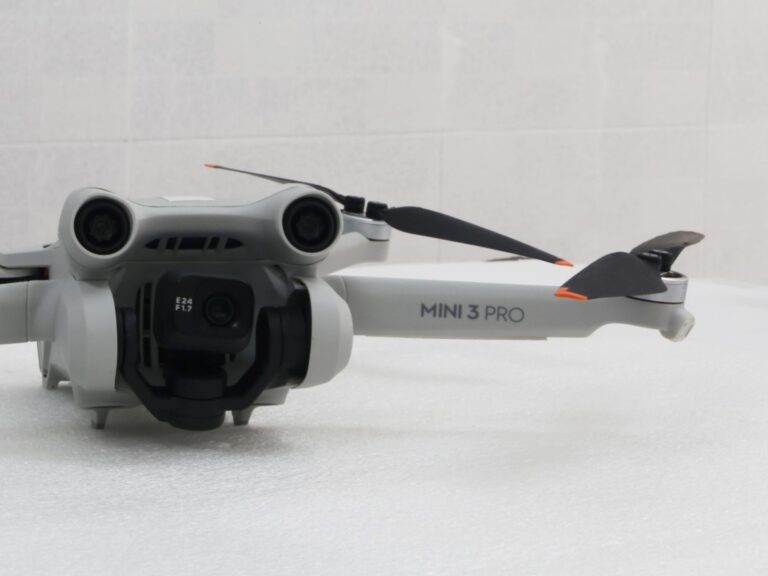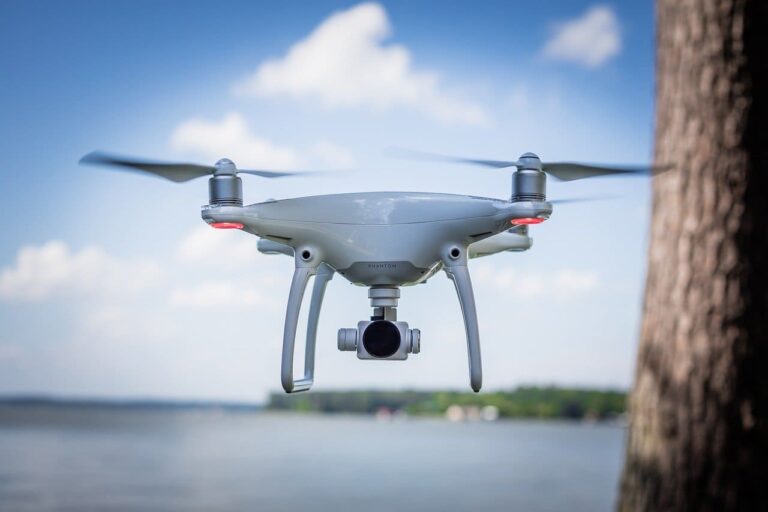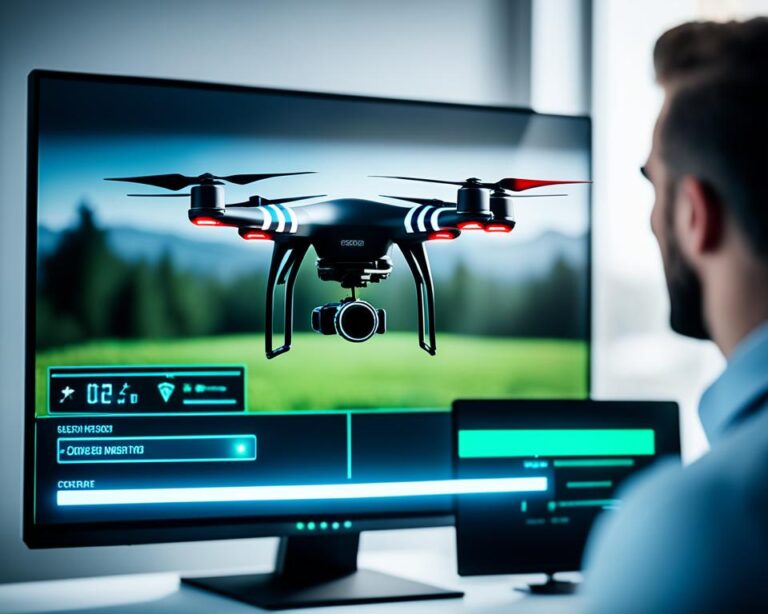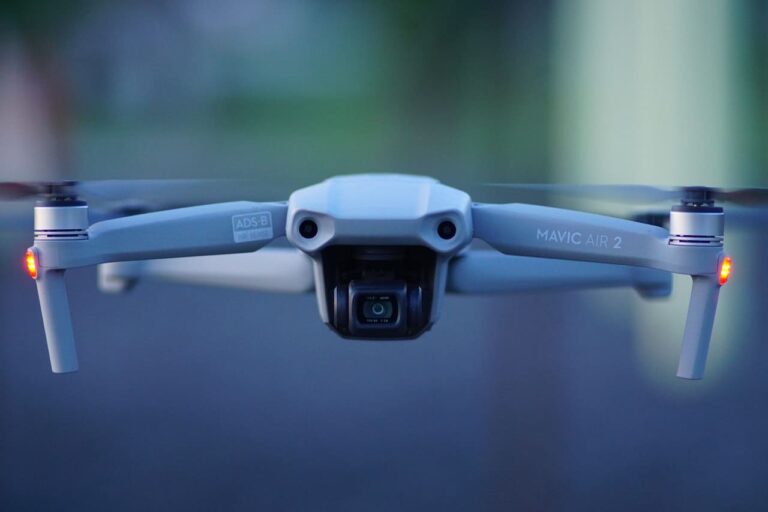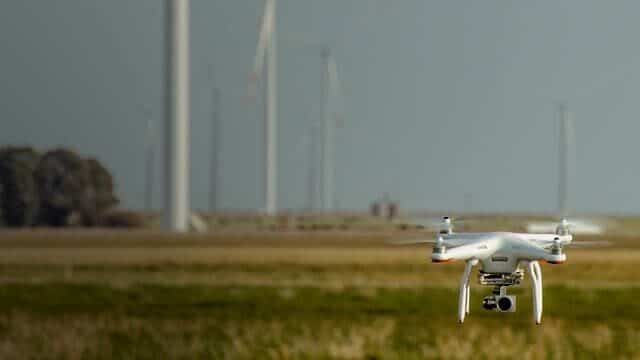DJI Drone error code 30064 “Unable to take off 30064”
You’ve prepared for the perfect aerial shot, checked your batteries, found an ideal location, and then it happens – your DJI drone displays the frustrating message: “Unable to take off 30064.” This common error code stops flights before they begin, leaving many pilots confused and disappointed.
The 30064 error affects various DJI models including the popular Mavic, Phantom, and Mini series. When this issue occurs, your drone remains grounded despite appearing otherwise functional. Understanding why this happens is the first step toward getting back in the air quickly.
Many factors can trigger this particular error code, from simple calibration issues to more complex system malfunctions. The good news? Most instances can be resolved without sending your drone for professional repair or replacement.
This comprehensive guide offers practical DJI troubleshooting techniques specifically for this error. We’ve gathered solutions from experienced pilots, technical experts, and official support channels to create a complete resource for addressing this common problem.
Key Takeaways
- Error code 30064 prevents takeoff and affects multiple DJI drone models
- Most causes can be resolved through proper troubleshooting steps
- Calibration issues are among the most common triggers for this error
- Both basic and advanced solutions are covered in this guide
- No technical expertise is required to implement most fixes
- Proper maintenance helps prevent recurring error codes
Understanding DJI Drone Error Code 30064
Encountering the “Unable to take off 30064” message on your DJI drone can be frustrating, but understanding what it means is the first step toward resolving it. This error code isn’t just a random number – it’s your drone’s way of communicating a specific problem that needs addressing before you can safely take to the skies.
What Does “Unable to Take Off 30064” Mean?
Error code 30064 typically indicates a sensor calibration issue with your DJI drone. This problem specifically relates to the drone’s navigation system, particularly the compass or Inertial Measurement Unit (IMU). When these components aren’t properly calibrated, your drone cannot accurately determine its orientation or position in space.
Think of it as your drone having an inner ear problem – without proper spatial awareness, it can’t safely navigate. The error essentially means your drone’s internal compass is confused about which direction is north, making takeoff potentially dangerous.
The good news is that this error is usually fixable without professional intervention. Understanding the specific cause behind the error code is crucial for applying the right solution.
DJI Models Commonly Affected (Mavic, Phantom, Mini Series)
While error 30064 can appear across the DJI product line, certain models experience this issue more frequently than others. The Mavic series drones, particularly the Mavic Pro, Mavic 2, and Mavic Air, commonly encounter this error code when their sensitive navigation systems detect calibration issues.
Phantom series owners, especially those flying Phantom 3 and Phantom 4 models, also regularly report this error. These larger drones have multiple compass sensors that can sometimes provide conflicting readings, triggering the error.
Even the newer, more compact Mini series drones aren’t immune to error 30064. Despite their advanced technology, these lightweight models can be particularly susceptible to environmental interference that affects compass readings.
Each model may display slightly different symptoms or require specific calibration procedures, which we’ll cover in later sections.
How This Error Impacts Flight Performance
The most obvious impact of error 30064 is that it prevents takeoff entirely. Your drone’s safety systems are designed to keep it grounded when critical navigation components aren’t functioning properly. This is actually a protective feature that prevents potentially dangerous flight conditions.
If you somehow manage to bypass this error or if it occurs mid-flight, you might notice erratic flight behavior. Your drone could drift uncontrollably, fail to maintain position, or become unresponsive to directional commands. In worst-case scenarios, this can lead to flyaways or crashes.
Some pilots report their drones spinning in circles or moving in unexpected directions when affected by compass issues. These behaviors directly result from the drone receiving incorrect orientation data from its sensors.
Attempting to ignore this error can put your valuable equipment at serious risk. A drone with compromised navigation capabilities might not be able to return home safely, potentially resulting in a lost or damaged device. Understanding these impacts emphasizes why properly addressing error 30064 is essential rather than trying to work around it.
Common Causes of the “Unable to Take Off 30064” Error
Diagnosing the exact cause behind DJI’s error code 30064 is the first critical step toward resolving this flight-preventing problem. This error rarely appears without reason, and understanding its common triggers will help you address the issue more efficiently. Let’s explore the four main culprits that typically generate this frustrating error message.
Compass Calibration Issues
The most frequent cause of error 30064 is compass miscalibration. Your drone’s compass provides crucial directional information, and when it becomes disoriented, your DJI drone cannot safely determine its orientation. DJI compass problems often develop after transporting your drone long distances or storing it near magnetic objects.
Even placing your drone near speakers, metal furniture, or electronic devices can gradually affect compass accuracy. The internal compass may also naturally drift over time, requiring periodic recalibration even with careful handling.

IMU Sensor Problems
The Inertial Measurement Unit (IMU) is your drone’s balance and motion detection system. Drone IMU issues manifest when these sensors cannot accurately measure acceleration, orientation, and gravitational forces. When the IMU provides faulty data, your drone’s flight controller prevents takeoff as a safety measure.
Signs of IMU problems include unusual vibration during hover attempts or drift when in GPS mode. Physical impacts, even minor ones, can sometimes knock these sensitive components out of alignment, triggering error 30064.
Environmental Interference Factors
Your drone’s sensors are highly susceptible to external interference. Magnetic interference drones encounter comes from surprising sources that many pilots overlook. Power lines, metal structures, and even certain types of rocks with high iron content can disrupt compass readings.
Other common interference sources include:
- Reinforced concrete structures
- Professional camera equipment with magnetic components
- Some metal-infused drone landing pads
- Large vehicles or machinery nearby
Firmware Conflicts and Bugs
Software issues can be just as problematic as hardware or environmental factors. DJI firmware bugs occasionally appear in new updates, causing sensor calibration errors or false readings. Sometimes, an outdated firmware version may become incompatible with the latest DJI Fly or GO 4 app.
Specific firmware versions have been known to trigger error 30064 more frequently. For example, some Mavic Mini users reported increased occurrences after certain updates in early 2022. Conversely, running very outdated firmware can also prevent proper communication between your drone’s components.
By identifying which of these factors is affecting your drone, you’ll be better equipped to apply the right solution and get back to flying quickly. In the following sections, we’ll explore specific troubleshooting steps for each of these causes.
Basic Troubleshooting Steps for Error 30064
Encountering error code 30064 on your DJI drone doesn’t always require professional assistance, as several straightforward troubleshooting methods can get you back in the air quickly. Before diving into complex solutions, try these fundamental fixes that resolve many instances of this common error.
Proper Drone Restart Procedure
A complete power cycle often clears temporary system glitches causing the 30064 error. Unlike a simple power toggle, a proper DJI drone restart requires removing the battery entirely.
First, power down your drone completely. Remove the battery and wait 10-15 seconds to allow internal capacitors to discharge fully. This reset helps clear the drone’s temporary memory that might be storing error states. Reinsert the battery firmly and power up again on a level surface.
Battery Health and Connection Verification
Battery issues frequently trigger sensor errors that manifest as code 30064. Inspect battery connection points for any signs of corrosion, debris, or damage that might interfere with proper power delivery.

Verify that your battery maintains adequate charge levels—flying with less than 30% remaining power can trigger protective error codes. If possible, try using a different battery to determine if the original is causing the problem.
Correct Startup Sequence Protocol
Following the proper DJI startup sequence prevents initialization errors. Place your drone on a flat, stable surface before powering up. Turn on the remote controller first, then power on the drone.
Allow the drone to complete its full startup routine without moving it. Premature movement can disrupt the critical sensor calibration process that occurs during initialization. Wait until all status lights show normal operation before attempting takeoff.
App Settings Verification
Incorrect DJI Go app settings can trigger the 30064 error code. Open your DJI Go or DJI Fly app and navigate to the safety settings section. Verify that compass and IMU status indicators show normal operation.
Check that you haven’t accidentally enabled beginner mode or other flight restrictions. Ensure your flight mode selection is appropriate for your current environment. Sometimes, simply closing and reopening the app can resolve communication issues between your device and the drone.
These basic troubleshooting steps resolve a surprising number of 30064 errors without requiring advanced technical knowledge. If your drone continues to display the error after trying these methods, you may need to proceed to more targeted solutions in the following sections.
Fixing “Unable to Take Off 30064” with Compass Calibration
Resolving the “Unable to Take Off 30064” error often comes down to one critical maintenance task: properly calibrating your DJI drone’s compass. The compass system serves as your drone’s directional brain, helping it understand its orientation relative to Earth’s magnetic field. When this system gets confused, your drone refuses to take off for safety reasons.

Recognizing When Compass Calibration Is Needed
Several telltale signs indicate your DJI drone needs compass calibration:
- Your DJI app displays a yellow or red compass icon in the status bar
- The drone spins in circles or drifts sideways during hover
- The aircraft points in the wrong direction when in GPS mode
- You receive explicit “Compass Error” notifications
- The drone was recently transported to a new flying location (especially over long distances)
Pay special attention after travelingwith your drone. Geographic location changes affect Earth’s magnetic field readings, often triggering the need for recalibration. Many pilots make the mistake of skipping this crucial step when flying in a new area.
Step-by-Step Compass Calibration Process
Calibrating your DJI drone’s compass properly requires following a specific sequence of steps:
1. Find an open area away from magnetic interference sources like power lines, metal structures, and electronic devices.
2. Power on your drone and connect to the DJI app.
3. Access calibration settings:
– In DJI GO 4: Tap the three dots → Settings → Sensors → Compass Calibration
– In DJI Fly: Tap the three dots → Safety → Compass Calibration
4. Follow the on-screen instructions for the horizontal rotation:
– Hold your drone horizontally
– Rotate it 360° clockwise until the app indicates completion
–Maintain a steady rotation speed(approximately 3 seconds per full rotation)
5. Complete the vertical rotation:
– Hold your drone with its nose pointing downward
– Rotate it 360° clockwise until the app confirms successful calibration
“A properly calibrated compass is the foundation of safe drone flight. Skip this step, and you’re essentially flying blind, regardless of how advanced your drone might be.”
Troubleshooting Failed Calibration Attempts
If your calibration attempts fail, try these proven solutions:
1.Change your location– Move at least 15-20 feet away from your current position and try again. Sometimes even subtle magnetic interference can disrupt the process.
2.Check for interference sources– Remove watches, phones, keys, and other metal objects from your pockets. Even belt buckles can sometimes cause issues.
3.Ensure proper drone positioning– The aircraft must be perfectly level during horizontal calibration and precisely vertical during the second phase.
4.Adjust rotation speed– Moving too quickly or too slowly can cause calibration failures. Aim for a smooth, steady rotation of about 3 seconds per full turn.
5.Restart everything– Power off both the drone and controller, close the app, then restart the entire system before attempting calibration again.
If the app shows successful calibration but the error persists, try flying in a different location. Sometimes the local magnetic environment is simply too complex for reliable compass operation.
Model-Specific Calibration Differences
Different DJI models have unique calibration characteristics that are important to understand:
| DJI Model | Calibration Access | Special Considerations | Success Indicators |
|---|---|---|---|
| Mavic Mini/Mini 2 | DJI Fly app → Safety → Sensors | Simplified process with less sensitive compass | Green status light + app confirmation |
| Mavic Air 2/Air 2S | DJI Fly app → Safety → Calibration | Requires precise rotation speed | Aircraft status lights change from yellow to green |
| Mavic Pro/2/3 | DJI GO 4 → Settings → Sensors | Has dual compasses requiring both to calibrate | Audible tone + visual confirmation in app |
| Phantom 4 Series | DJI GO 4 → MC Settings → Sensors | More sensitive to interference; needs ideal conditions | Status LED changes from yellow flashing to normal |
The Phantom series typically requires more precise calibration due to its larger frame and multiple compass sensors. When calibrating a Phantom drone, maintain an even more consistent rotation speed and ensure you’re in an area with minimal electromagnetic interference.
For Mavic Mini users, the calibration process is more forgiving, but you should still follow best practices. The Mini series uses a simplified compass system that sometimes requires multiple calibration attempts even in ideal conditions.Remember that all DJI drones benefit from regular compass calibration– not just when errors occur. Many experienced pilots perform a quick calibration before their first flight of the day, especially when flying in new locations or after traveling.
IMU Calibration Solutions
IMU calibration represents a crucial yet often overlooked solution when facing the frustrating “Unable to take off 30064” error on your DJI drone. When compass calibration fails to resolve the issue, the Inertial Measurement Unit (IMU) – your drone’s internal balance system – likely needs attention. This sophisticated sensor array measures acceleration, orientation, and angular rates, all essential for stable flight.
Identifying IMU-Related Issues
Several telltale signs indicate IMU sensor problems. If your drone drifts horizontally while hovering in GPS mode, this suggests the IMU isn’t properly measuring position. Unusual vibrations during flight or a drone that struggles to maintain altitude points to IMU issues.
The DJI app often displays specific warnings like “IMU Calibration Required” or “IMU Error” alongside error 30064. You might also notice the drone behaving erratically during pre-flight checks, with motors spinning unevenly or the aircraft tilting without input.
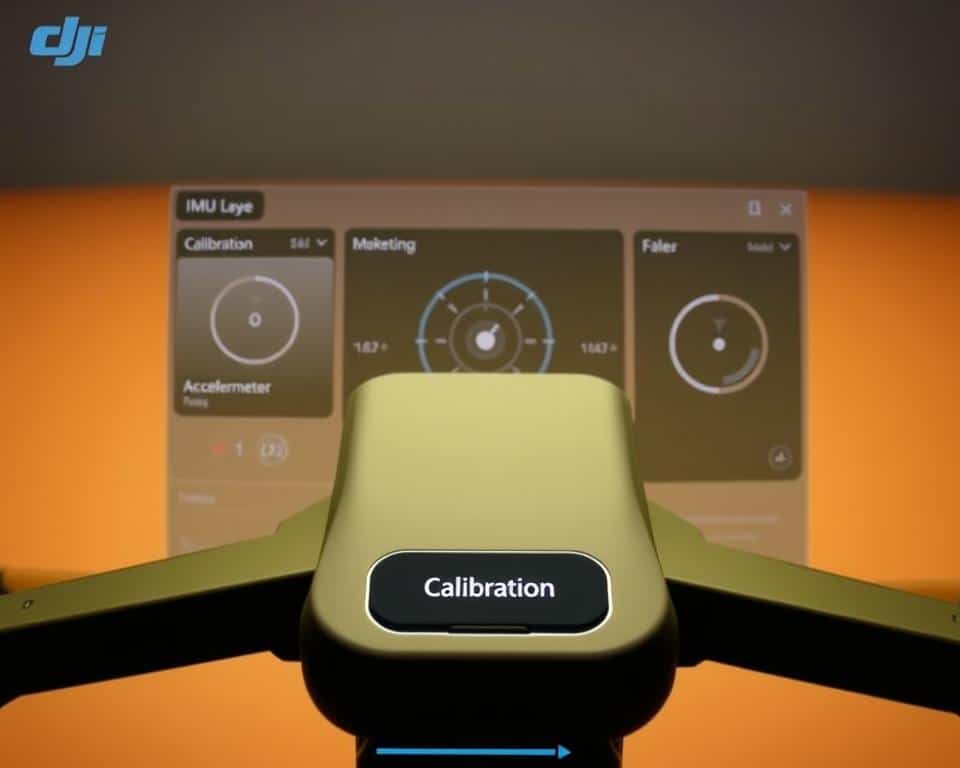
Complete IMU Calibration Walkthrough
To perform a basic IMU calibration through the DJI Go/Fly app:
- Place your drone on a perfectly level surface – this is critical for accurate calibration
- Open the DJI app and connect to your drone
- Navigate to Settings → Advanced Settings → Sensors → IMU Calibration
- Select “Start Calibration” and follow the on-screen instructions
- Remain completely still and avoid touching the drone during the process
The calibration typically takes 5-7 minutes to complete. Temperature stability is essential – avoid calibrating in direct sunlight or rapidly changing environments. The drone will reboot automatically when finished.
Advanced IMU Troubleshooting Techniques
For persistent issues, DJI Assistant 2 software offers more comprehensive calibration options. Connect your drone to a computer, launch DJI Assistant 2, and select “Calibration” from the menu. This method provides detailed sensor readings and allows for more precise adjustments.
“Always perform IMU calibration in a temperature-stable environment away from electronic interference. Even subtle magnetic fields can compromise the calibration process.”
Check for physical damage that might affect sensor readings. Examine the drone body for cracks or warping, particularly after crashes. Even minor structural issues can throw off sensitive IMU measurements.
Resolving Persistent IMU Errors
If standard calibration fails repeatedly, try these advanced approaches:
- Perform multiple calibrations in different locations to rule out environmental interference
- Update or downgrade firmware (some versions have known IMU calibration bugs)
- Try the “six-sided calibration” by positioning the drone in all six orientations during the process
For truly stubborn cases, a factory reset might be necessary. As a last resort, the IMU module may require professional service or replacement through DJI Support. Remember that patience is crucial – rushing through calibration often leads to failed attempts and continued error codes.
Firmware Updates and Downgrades to Resolve Error 30064
Managing your DJI drone’s firmware effectively can be the key to eliminating the frustrating Error 30064 permanently. While many pilots focus on hardware calibration, the software running your drone often holds the solution to persistent takeoff problems. Firmware acts as the brain of your DJI drone, controlling how sensors communicate and interpret data.
Checking and Verifying Current Firmware Version
Before attempting any firmware modifications, you need to identify what version your drone is currently running. Open your DJI Go or DJI Fly app and navigate to the main controller settings. Look for “About” or “Aircraft Information” to find your current firmware version number.
Once you’ve located your version number, visit the official DJI website to check if it’s the latest release. Some firmware versions have known issues with sensor calibration that directly trigger Error 30064. Community forums can also provide valuable insights about problematic firmware releases.
Record both your aircraft and remote controller firmware versions, as mismatched versions can sometimes cause communication problems that manifest as Error 30064.
Safe Firmware Update Procedures
Updating your DJI drone’s firmware requires careful preparation to avoid creating new problems. Start by ensuring your drone battery and controller have at least 50% charge remaining. Connect to a stable Wi-Fi network with good bandwidth.
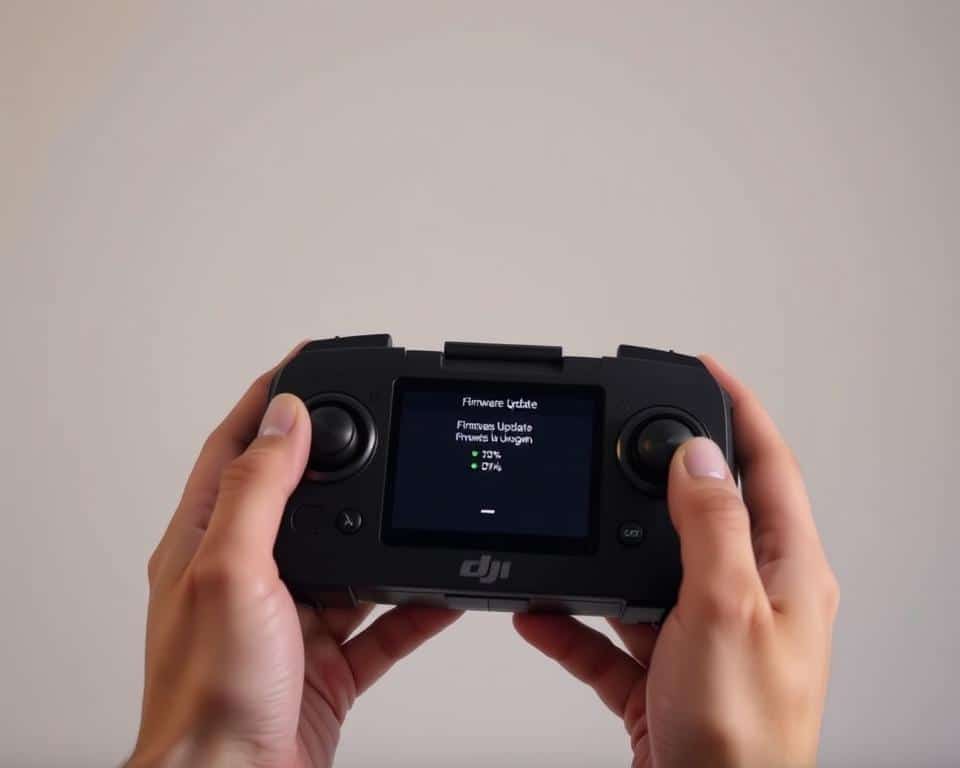
Always back up your current settings before proceeding with any update. Through the DJI app, select “Check for Updates” and follow the on-screen instructions. Never power off your drone during the update process, as this can corrupt the firmware installation.
Remember to update both your aircraft and remote controller to matching versions. The entire process typically takes 15-20 minutes, depending on your internet speed and the size of the update.
When and How to Perform Firmware Downgrades
Sometimes the latest isn’t the greatest. If Error 30064 appeared after a recent firmware update, downgrading to a previous stable version might solve your problem. DJI doesn’t officially support downgrades through their app, but alternative methods exist.
DJI Assistant 2 software offers more control over firmware management. Download this desktop application from DJI’s website, connect your drone via USB, and select the “Firmware Update” option. From here, you can often install specific older versions.
Before downgrading, research which previous version was stable for your specific model. The ideal candidate is usually the version before problems began, not necessarily the oldest available version.
Troubleshooting Failed Updates
Update failures happen even with careful preparation. If your update gets stuck at a certain percentage, first wait at least 30 minutes before taking action. Sometimes large updates progress slowly at certain stages.
If the update truly fails, try these recovery steps in sequence:
| Update Issue | Possible Cause | Solution | Success Rate |
|---|---|---|---|
| Update Stuck | Connection Interruption | Restart app and drone, retry with stronger Wi-Fi | 75% |
| Verification Failed | Corrupted Download | Clear cache, use DJI Assistant 2 instead | 85% |
| Drone Unresponsive | Partial Update Applied | Force restart, connect to DJI Assistant 2 | 70% |
| Update Not Available | Regional Restrictions | Use VPN or manual firmware file | 90% |
For drones that become completely unresponsive during updates, the combination button method often works. Hold the power button for 15 seconds, then immediately press the function and power buttons simultaneously for 7 seconds to force a system reset.
Remember that firmware management requires patience. Never attempt multiple fixes simultaneously, as this makes it difficult to identify which solution actually resolved Error 30064.
Environmental Factors and Practical Solutions
The environment in which you fly your DJI drone can directly cause Error 30064, even when the device itself is functioning properly. Understanding these external factors can save you hours of frustration trying to fix a drone that isn’t actually broken.
Identifying and Avoiding Magnetic Interference Sources
Magnetic interference is a primary environmental trigger for compass errors. Your DJI drone’s sensitive navigation systems can be thrown off by numerous sources in everyday environments.
Common magnetic interference sources include:
- Power lines and electrical transformers
- Metal structures like bridges and radio towers
- Vehicles and large machinery
- Underground pipes and reinforced concrete
- Certain rocks and soils with high iron content
To detect interference, use the compass sensor readings in your DJI app. Watch for significant fluctuations when moving around your potential flying area. If readings jump erratically, consider relocating to a cleaner magnetic environment.
Weather Conditions That Trigger Error 30064
Weather plays a crucial role in drone performance and can directly trigger Error 30064. Extreme temperatures affect battery performance and sensor accuracy.
Most DJI drones operate optimally between 32°F and 104°F (0°C to 40°C). When moving between dramatically different temperatures, allow your drone to acclimate for 15-20 minutes before takeoff.
High humidity and approaching electrical storms can also interfere with compass readings. The electrical charges in storm clouds create magnetic disturbances that confuse your drone’s orientation systems.
Selecting Optimal Takeoff Locations
The perfect takeoff spot combines several key elements that minimize Error 30064 risks:
- Open areas at least 30 feet from large structures
- Elevated positions with clear sky visibility
- Natural surfaces like grass or dirt (rather than metal or concrete)
- Areas away from high-voltage equipment
While concrete seems ideal for its flatness, many concrete structures contain metal reinforcement that can disrupt compass readings. Natural surfaces often provide cleaner magnetic environments.
Using GPS Signal Strength Indicators
Poor GPS reception contributes to Error 30064 by preventing your drone from establishing proper orientation. Your DJI app displays GPS signal strength through satellite icons and signal bars.
For stable flight, most DJI drones require connections to at least 7 satellites. When your signal shows fewer connections or fluctuating strength, your drone may trigger Error 30064 as a safety precaution.
Monitor the GPS signal strength indicator before takeoff. If it shows weak reception, move to a more open area with clearer sky visibility. Even slight position changes of 15-20 feet can dramatically improve satellite connectivity.
Advanced Troubleshooting for Persistent Error 30064 Issues
Persistent Error 30064 issues require a more sophisticated approach to diagnostics and repair that go beyond standard calibration procedures. When basic troubleshooting fails to resolve the problem, these advanced techniques can help identify and fix the underlying causes.
Using DJI Assistant 2 Software for Detailed Diagnostics
DJI Assistant 2 software offers powerful diagnostic capabilities not available through the mobile app. To use this tool effectively:
- Download DJI Assistant 2 for your operating system (Windows or Mac)
- Connect your drone to your computer via USB cable
- Launch the software and select your drone model
- Navigate to the “Diagnostics” section to access detailed sensor readings
The software allows you to view comprehensive sensor logs, which can reveal specific issues with compass readings or IMU sensors that might be triggering Error 30064. Pay special attention to sensor variance values – high numbers often indicate hardware problems requiring attention.
Hardware Inspection and Damage Assessment
Physical damage can cause sensor misalignments that trigger Error 30064. Conduct a thorough drone hardware inspection by checking:
- Frame integrity – look for bent arms or subtle crash damage
- Compass module placement – ensure it’s properly seated
- Water damage indicators – moisture can affect sensor readings
- Loose connections between components
Even minor physical damage can affect sensor calibration. If you spot any issues during your inspection, document them with photos before contacting support.
Complete Factory Reset Procedures
A DJI factory reset can resolve persistent software issues causing Error 30064. Before proceeding:
First, back up any flight logs or custom settings you wish to keep. To perform a factory reset on most DJI models, power on your drone, then press and hold the power button for 10 seconds until you see the status lights flash in a specific pattern. This process varies slightly between models, so consult your specific drone’s manual for exact instructions.
DJI Support Contact Protocol and Warranty Information
If all troubleshooting fails, contacting DJI warranty support is your best option. Before reaching out:
- Document all troubleshooting steps you’ve already tried
- Note your drone’s serial number and firmware version
- Prepare flight logs from the DJI Fly app or DJI Assistant 2
Contact DJI support through their official website or support hotline. For drones under warranty, sensor-related repairs are typically covered. Out-of-warranty repairs for Error 30064 issues generally cost between $65-$150 depending on the specific hardware problem identified.
Conclusion: Getting Your DJI Drone Back in the Air
Encountering error code 30064 can be frustrating, but with the right approach, you’ll be flying again in no time. The most effective path to fix DJI error 30064 typically begins with the simplest solutions before moving to more advanced techniques.
Start with a proper restart and battery check, then proceed to compass calibration if issues persist. IMU calibration often resolves more stubborn cases, while firmware updates can address underlying software bugs. When environmental factors are at play, finding a suitable takeoff location away from interference sources is crucial.
To prevent drone errors in the future, develop these habits:
• Calibrate your compass regularly, especially when changing flying locations
• Store your drone in a protective case away from magnetic objects
• Keep firmware updated (but research each update before installing)
• Take off from clear, flat surfaces away from electronic interference
Remember that almost every instance of error 30064 can be resolved without expensive repairs. The troubleshooting steps in this guide have helped countless pilots resolve drone takeoff issues across various DJI models.
By understanding both the causes and solutions for this common error, you’re now equipped with the knowledge needed for DJI troubleshooting success. The next time you see that error message, you’ll know exactly what steps to take to get your drone back where it belongs—in the air.

